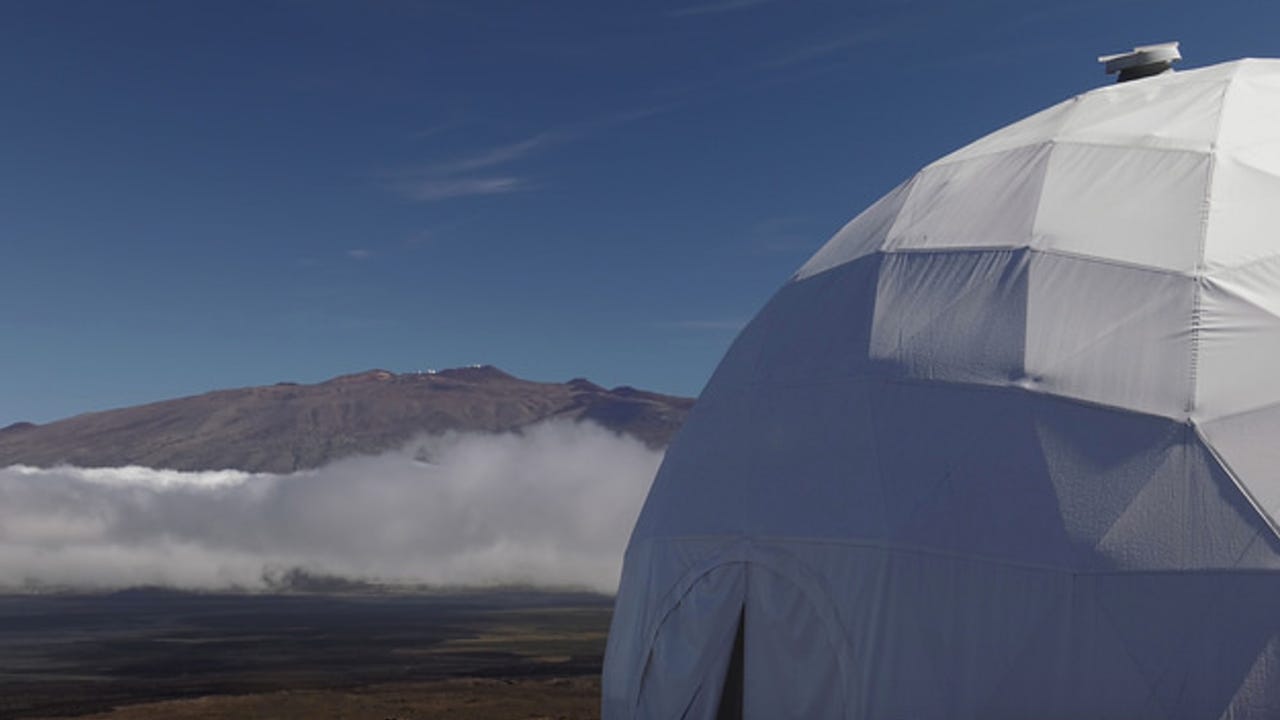Scientists complete eight month isolation experiment to simulate life on Mars


A group of six scientists isolated in a dome in Hawaii to simulate life on Mars have emerged.
Featured
The team, dubbed the Hawaiʻi Space Exploration Analog and Simulation (HI-SEAS) Mission V crew, exited a dome constructed on the slopes of Mauna Loa in Hawai'i after their eight-month experiment on September 17.
The UH Mānoa research project, made possible through funding provided by NASA, has been in operation since 2012. The aim of the project is to simulate what it would be like to start a colony on Mars to the best of our ability based on available data, and to resolve challenges on Earth before such a mission may be attempted in the future.
Samuel Paylor, another team member, said it was "really important" to get the human race off Earth to avoid mass extinction -- an attitude reflected in entrepreneur Elon Musk, who believes we must become a spacefaring race to stave off a Doomsday event.
While the team was kept busy with a range of experiments in their Mars-simulated environment, they also had to learn how to cope with the challenges.
When leaving the dome, the team had to gear up in hazmat suits when exploring the Hawaiian slope and landing site, to mimic the potential conditions a Mars colonist would face.
"Daily routines include food preparation from shelf-stable ingredients, exercise, scientific research, equipment testing and tracking resource utilization such as food, power and water," the university said.
Mission V was also subject to 20-minute communications delays between themselves and the outside, friends, and family, and also had to learn how to cook with dehydrated food supplies.
Joshua Ehrlich, the biology specialist of Mission V, said that the dome was able to cater for their needs in terms of fresh produce, a worry for any team cut off from food supplies delivered from the outside to maintain correct nutrition and health. The team member was responsible for growing and harvesting food.
"Carrots, peppers, Bok Choy, Chinese cabbage, mustard greens, radishes, tomatoes, potatoes, I mean gosh, tons of parsley and oregano, it was phenomenal," Ehrlich said. "I mean just that delicious, fresh taste from home was really good."
Explore the HI-SEAS Mars simulation dome (in pictures)
However, there was some relief from the dome's isolation. The team was issued with virtual reality headsets to pass the time and let their minds revisit the outside world.
After emerging, the team met with friends and family and enjoyed fresh fruit -- although being isolated from the current news this year may have been something of a blessing. However, another mission is already on the books, with Mission VI, also planned for eight months, due to begin in 2018.
"My advice for mission six is to be open with each other, to allow each other to react differently from a normal life and to work together despite that," commented Laura Lark, HI-SEAS V IT specialist.
"Long-term space travel is absolutely possible," she added. "There are certainly technical challenges to be overcome. There are certainly human factors to be figured out, that's part of what HI-SEAS is for. But I think that overcoming those challenges is just a matter of effort. We are absolutely capable of it."
PREVIOUS AND RELATED COVERAGE
China seals scientists in lab to study moon madness
The 200-day experiment will monitor for potential mental health issues caused by living in a restricted otherworld environment.
China and Europe's 'Moon village' could boost lunar mining, space tourism
We may dream of colonizing Mars, but in the meantime, a moonbase is on the table.